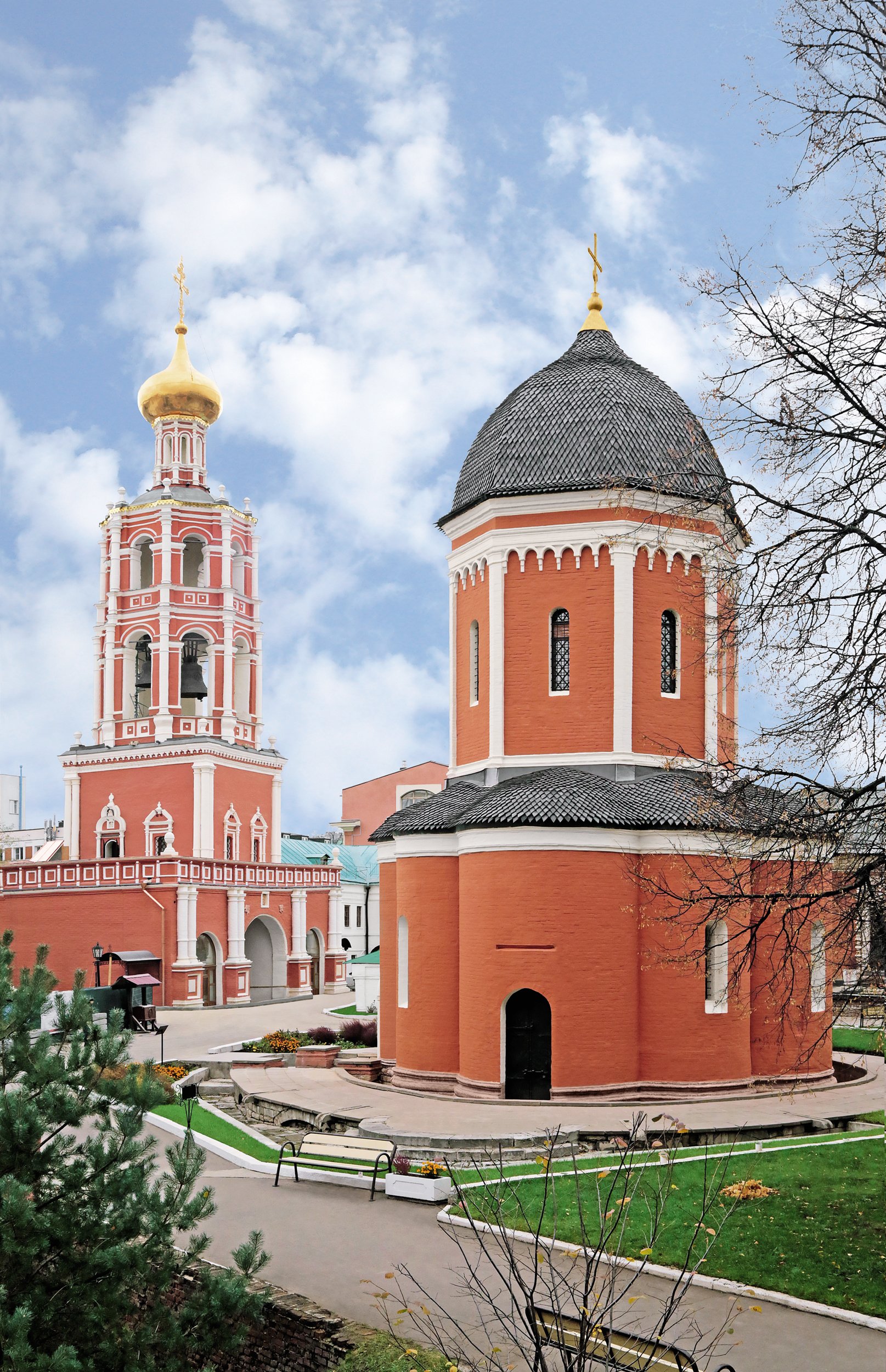Высоко-Петровский монастырь — одна из старейших монашеских обителей Москвы. Его история восходит к XIV веку, когда, по преданию, митрополит Пётр, перенёсший свою резиденцию из Владимира в Москву, основал монастырь во имя своего небесного покровителя. С 1514 года сохраняется практически в неизменном виде собор митрополита Петра, по которому монастырь получил своё название. Собор строился архитектором-итальянцем Алевизом Фрязиным, автором проекта Архангельского собора Московского Кремля.
Наибольшего расцвета монастырь достиг в конце XVII века благодаря покровительству семьи Нарышкиных. В этот период на территории монастыря были возведены церкови Боголюбской иконы Божией Матери (1684-1685) и преподобного Сергия Радонежского (1690). В Боголюбской церкви на средства царя Петра I создана фамильная усыпальница Нарышкиных, его родственников по материнской линии. Эти сооружения стали важными элементами монастырского ансамбля, выполненными в стиле нарышкинского барокко — элегантного и детализированного. В XVIII веке в монастыре появляются новые храмы и келейный корпус. Монастырский ансамбль с течением веков становился всё более многослойным, объединяя архитектурные стили разных эпох.
После революции монастырь был закрыт, а его здания использовались в хозяйственных целях. В советский период комплекс серьёзно пострадал, многие элементы были утрачены или повреждены. Лишь в 1990-е годы начался процесс его возрождения, церкви Высоко-Петровского монастыря получили статус патриаршего подворья, а в 2009 году он был возобновлён как монашеская обитель.























%20BEL_0521.jpg&w=1920&q=75)





_by_shakko_01.jpg&w=1920&q=75)